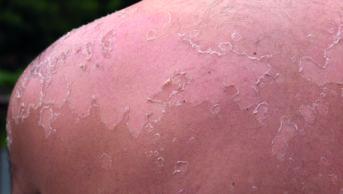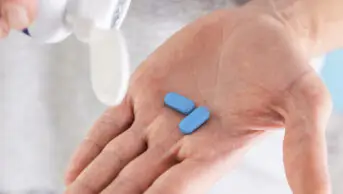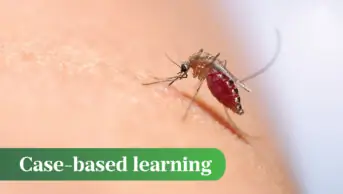View the full infographic here
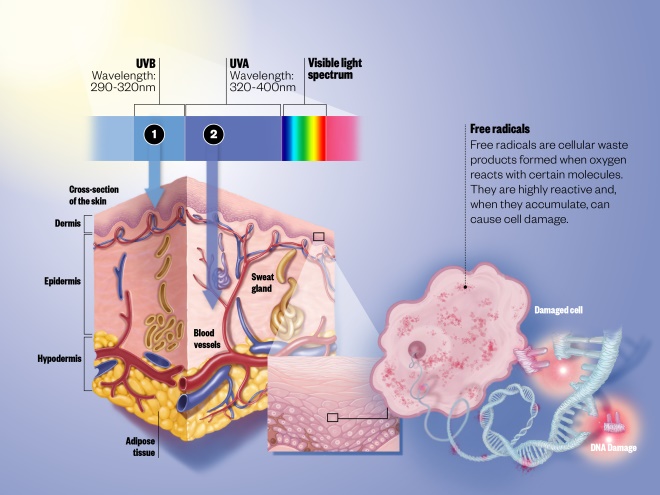
UVA vs UVB radiation, and how they cause skin damage
There are two main types of ultraviolet (UV) radiation:
1) UVB triggers the production of new melanin pigment and stimulates cells to produce a thicker epidermis resulting in a long-lasting tan. It is also the main cause of sunburn.
2) UVA activates melanin pigment already in the skin to produce a short-term tan. UVA penetrates more deeply than UVB and can cause long-term skin damage and premature ageing.
UV light reacts with skin cells to generate free radicals, which can indirectly cause DNA mutations that may lead to the development of skin cancer.

Chemical vs mineral sunscreen
There are two main types of sunscreen available — chemical and mineral. Many new products use a combination of the two.
1) Chemical sunscreens absorb UV radiation and convert it to heat, which is then released from the skin. Common examples include octisalate and avobenzone.
2) Mineral sunscreens act as a screen and reflect and scatter UV radiation in order to protect the skin. Common examples include zinc oxide and titanium oxide.
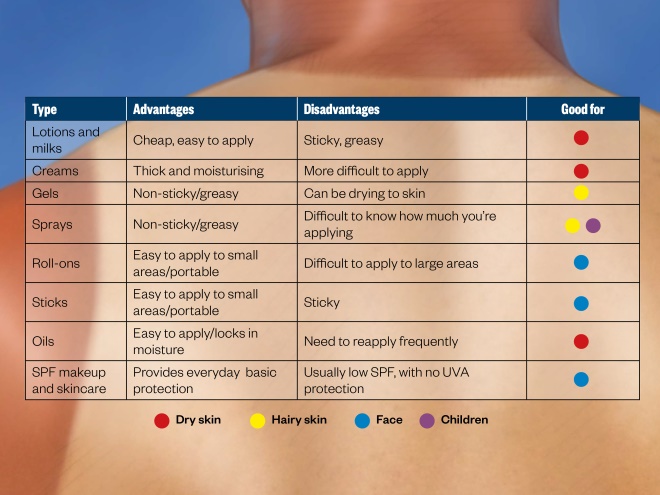
Types of sunscreen
There are a number of different formulations of sunscreen available and choice will depend on individual requirements.
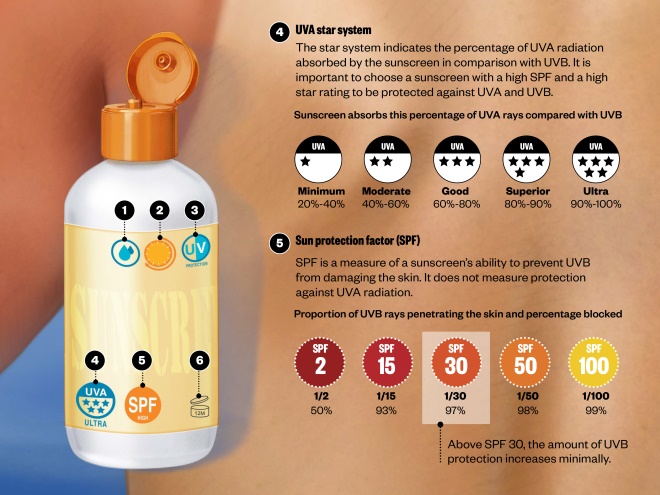
A closer look at sunscreens
There are several key terms that are used on sunscreen packaging.
1) Water resistant — maintains sunburn protection 40 minutes after water exposure.
2) Once-a-day protection — although some sunscreens claim to provide all day protection, Cancer Research UK and the British Association of Dermatologists advise against relying on any sunscreen for extended periods of time.
3) Broad spectrum protection — protects the skin from both UVA and UVB rays.
4) UVA star system.
5) Sun protection factor (SPF).
6) Expiry date — most sunscreens have a shelf life of between 12 and 18 months after opening. Storing sun cream at high temperatures or in direct sunlight can decrease its shelf life.
References
Infographic: Alex Baker
Sources: British Association of Dermatologists, Cancer Research UK, Melanoma UK, NHS Choices, Skin Cancer Foundation, The Sun Safety Alliance, Inc., CHOICE (Australia), Mayo Clinic.
Editorial adviser: Christian Aldridge, dermatologist and medical adviser to Melanoma UK.
